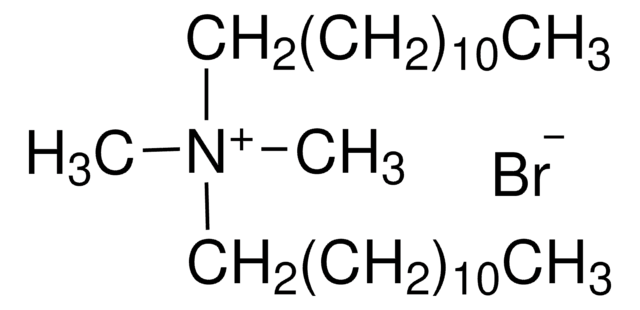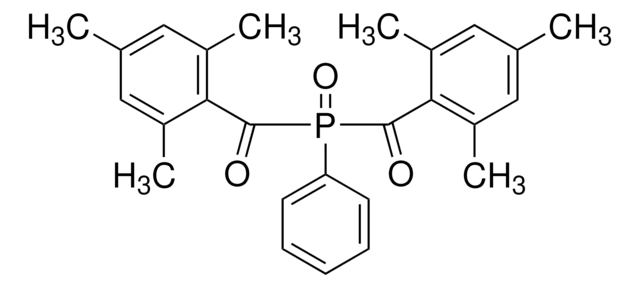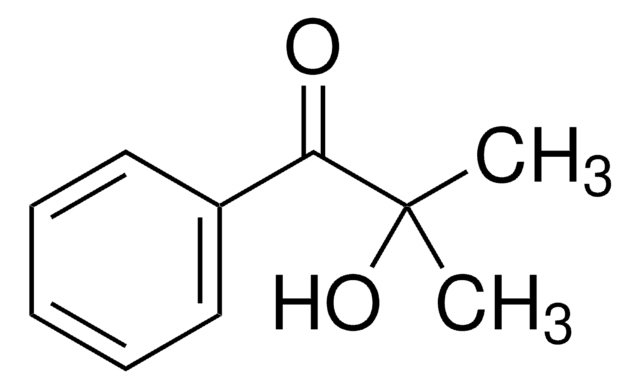653608
Aluminum
powder, <5 μm particle size, 99.5% trace metals basis
Iniciar sesiónpara Ver la Fijación de precios por contrato y de la organización
About This Item
Fórmula empírica (notación de Hill):
Al
Número de CAS:
Peso molecular:
26.98
Número CE:
Número MDL:
Código UNSPSC:
12352302
ID de la sustancia en PubChem:
Productos recomendados
Nivel de calidad
Análisis
99.5% trace metals basis
formulario
powder
temp. de autoignición
1400 °F
resistividad
2.6548 μΩ-cm
tamaño de partícula
<5 μm
bp
2460 °C (lit.)
mp
660.37 °C (lit.)
densidad
2.7 g/mL at 25 °C (lit.)
cadena SMILES
[Al]
InChI
1S/Al
Clave InChI
XAGFODPZIPBFFR-UHFFFAOYSA-N
Categorías relacionadas
Aplicación
Aluminum powder can be used for a variety of applications, such as:
- generation of hydrogen from water
- precursor in the chemical industry
- mechanical alloying
- energy materials
Palabra de señalización
Danger
Frases de peligro
Consejos de prudencia
Clasificaciones de peligro
Pyr. Sol. 1 - Water-react 2
Código de clase de almacenamiento
4.2 - Pyrophoric and self-heating hazardous materials
Clase de riesgo para el agua (WGK)
nwg
Punto de inflamabilidad (°F)
Not applicable
Punto de inflamabilidad (°C)
Not applicable
Elija entre una de las versiones más recientes:
¿Ya tiene este producto?
Encuentre la documentación para los productos que ha comprado recientemente en la Biblioteca de documentos.
Los clientes también vieron
Mechanical alloying of multi-walled carbon nanotubes and aluminium powders for the preparation of carbon/metal composites
Wang L, et al.
Carbon, 47(15), 3427-3433 (2009)
Thierry Deschamps et al.
Optics express, 21(7), 8382-8392 (2013-04-11)
Using a combination of experimental techniques such as optical absorption, Raman scattering, continuous wave and pulse Electron Spin Resonance (ESR), we characterize a set of γ-irradiated Yb(3+) doped silica glass preforms with different contents of phosphorous and aluminum. We demonstrate
Caitlin Carney et al.
Journal of the American Academy of Dermatology, 69(4), 578-582 (2013-07-17)
Laser treatment has emerged as a novel treatment modality for onychomycosis. We sought to determine thermal response and optical effects of a submillisecond neodymium:yttrium-aluminum-garnet (Nd:YAG) 1064-nm laser on common fungal nail pathogens, and the clinical efficacy and safety of the
Arjun Joshua et al.
Proceedings of the National Academy of Sciences of the United States of America, 110(24), 9633-9638 (2013-05-28)
Controlling the coupling between localized spins and itinerant electrons can lead to exotic magnetic states. A novel system featuring local magnetic moments and extended 2D electrons is the interface between LaAlO3 and SrTiO3. The magnetism of the interface, however, was
Jesper C Holst et al.
Proceedings of the National Academy of Sciences of the United States of America, 110(22), 8819-8823 (2013-05-15)
Refractory inclusions [calcium-aluminum-rich inclusions, (CAIs)] represent the oldest Solar System solids and provide information regarding the formation of the Sun and its protoplanetary disk. CAIs contain evidence of now extinct short-lived radioisotopes (e.g., (26)Al, (41)Ca, and (182)Hf) synthesized in one
Artículos
An article concerning self-propagating reactions induced by mechanical alloying, presented by Sigma-Aldrich.com.
Nuestro equipo de científicos tiene experiencia en todas las áreas de investigación: Ciencias de la vida, Ciencia de los materiales, Síntesis química, Cromatografía, Analítica y muchas otras.
Póngase en contacto con el Servicio técnico






